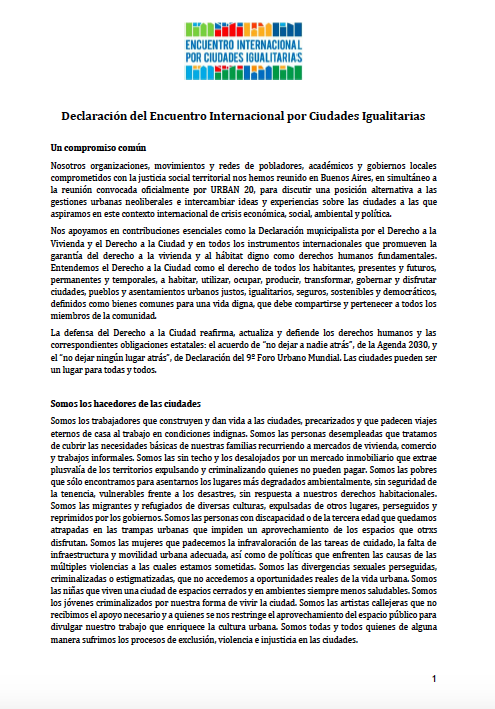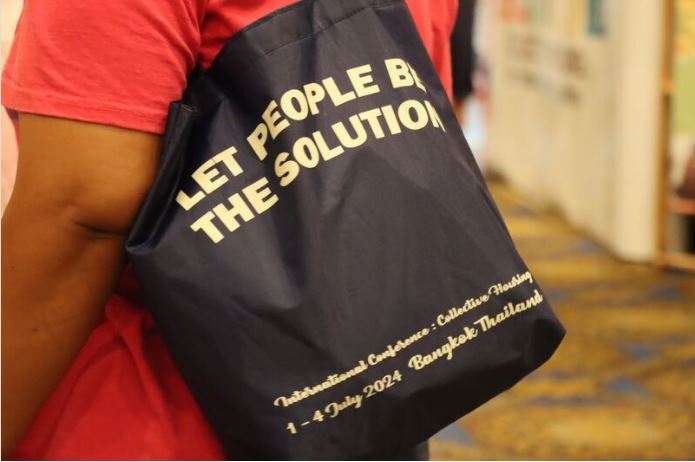The conversion of rental housing into free-ownership leads to pressure, rental refugees and evictions. The tenants react with fear even when they organize protests, legal measures, political advocacy and search for a long term alternatives. In 2005 Eon sold Viterra AG to the British based private equity fund Terra Firma/Annington which continues the privatisation process. This provisional report gives a general overview on the context and story of the movements from about 1999-2006.
__________________________
Large parts of the region’s housing stock were originally produced by mining, steel, chemical, and other companies. Due to the beginnings of the employment crisis during the 1970s the industries lost their traditional interest in production of new company flats, and reduced their investments in maintenance and repair. In the late 1980s, the national government abolished the law for non-profit housing companies. This was the final step to initiate total business orientation in the entire rental housing sector in Germany. The industrial housing companies, which had been mainly orientated to housing provision for the masses, now changed their attitude and viewed the existing housing stock and real estate as a resource for profit. The main strategy to profit from existing old housing stock is to sell it. Instead of spending money on maintenance, sale of housing brings money.
All landlords of company flats – forced by their shareholders – became more or less active in this market. Customers are sometimes speculators or investment groups, but the final customer is always the consumer, who may be the tenant or another person who wants to live in the flat.
Around the year 2000, new economical players appeared in the regional housing sector. International financial investors, which had collected huge amounts of capital worldwide, became interested in building operative platforms within the big German housing market, since from their point of view it seems undervalued. The interest of the financial funds to buy met with the local industries interest to get rid of their housing companies. The industrial corporations intelligently used this situation to create hot competitive beddings for their huge housing stocks. Between 2004 and 2005 the majority of former steel and miners housing stocks about 250.000 housing units – was sold to a few new investors, who generated huge returns on their investment. The new owners continue partly even intensify – the conversion of rental housing into free ownership. At the same time the industrial corporations invest the high returns from the sales in global buy-outs of foreign corporations in their key business.
Viterra AG
The Viterra AG was the largest landlord company in
Since the late 1990s Veba/Viterra tried to improve its shareholder value through different strategies which have changed over the years. Since about 2002 Viterra AG tried to sell as many flats as possible in the
In early 2004 Viterra sold a package of 32,000 flats to a bank-based real-estate and leasing company (Mira/KGAL). Viterra kept the administration of the flats while MIRA planned to divide and sell the whole stock in small pieces. As a result whole city districts – most significantly in the City of
Annington: The final exit for Eon
In 2004/2005 Eon AG started the process of sale of the whole Viterra company. Three private equity funds, mainly Anglo-Saxon, were highly interested to overtake the huge housing stock in order to build a German platform for further invasions of the German housing market. Backed by the competition of leading funds Eon in June 2005 succeeded to sell the whole Viterra Company for the very high prize of nearly 7 billion Euros to British private equity fund TerraFirma which runs a housing branch named Annington. After buying Viterra they control 250.000 flats in
An indispensable pillar of their strategy is the continuation and optimisation of the process of condo-conversion sales. Because returns after condo-conversions in the long run are higher than so called block-sales, Annington at the moment concentrates on direct marketing to the end user and stopped block sales.




